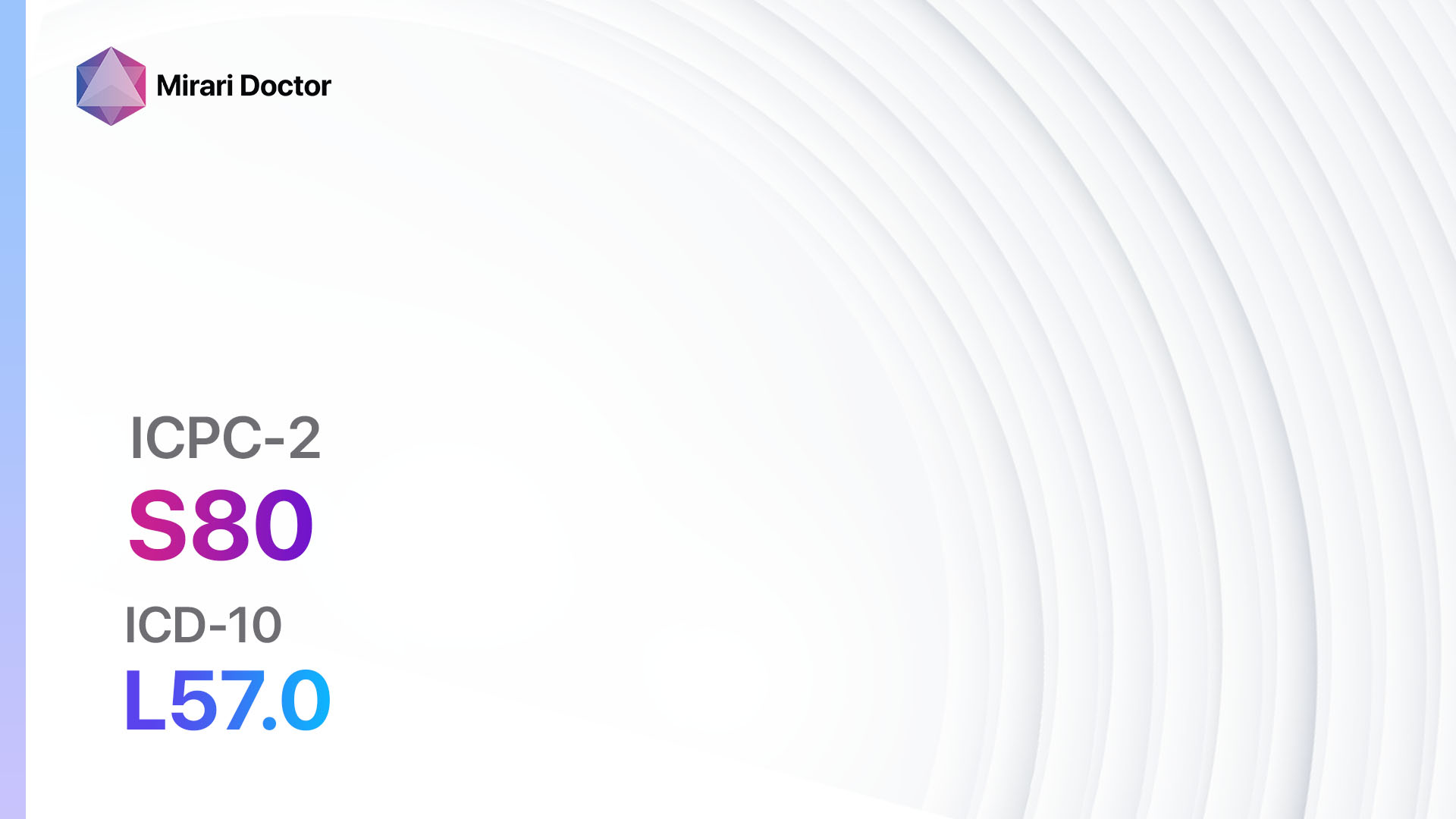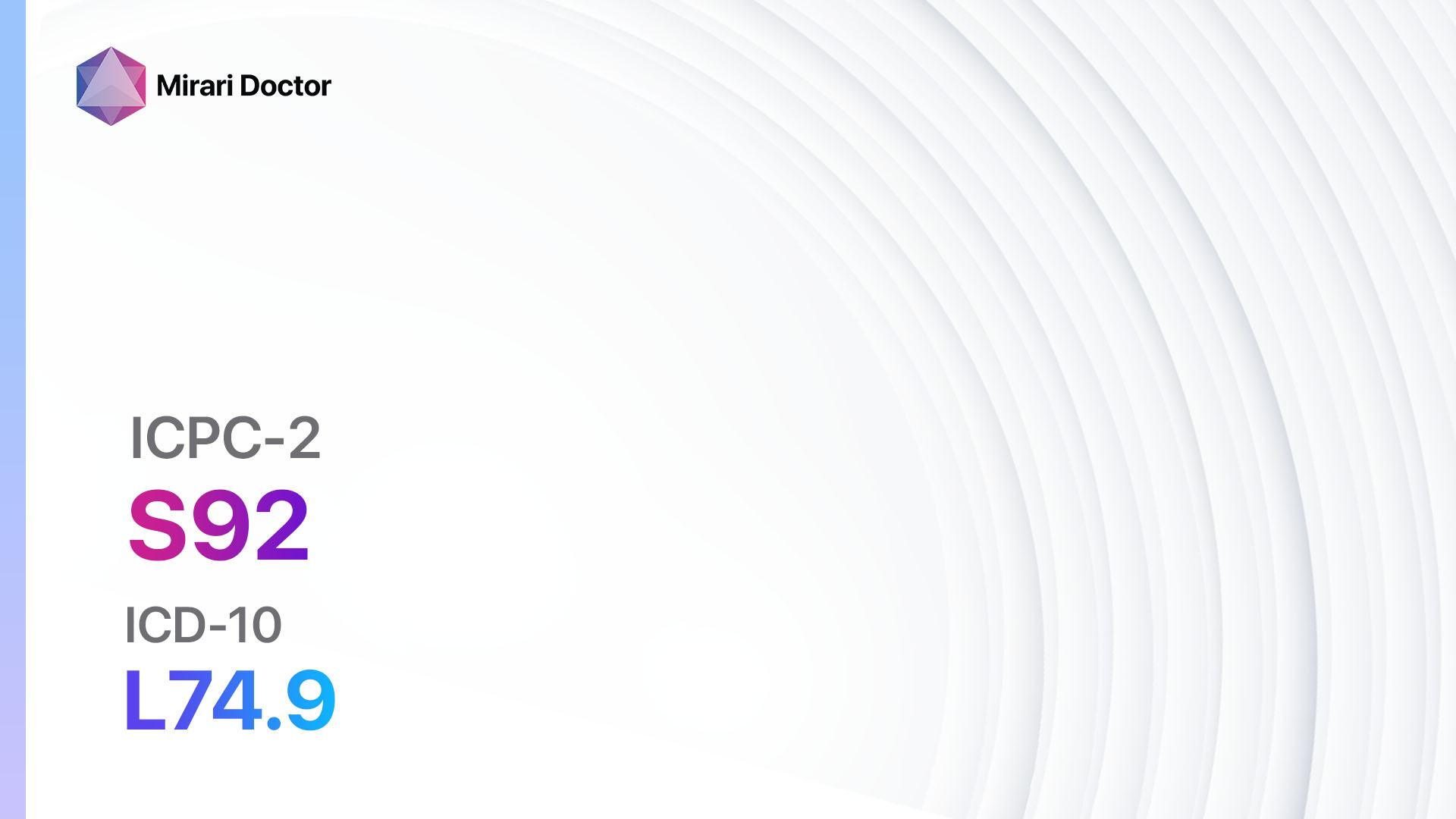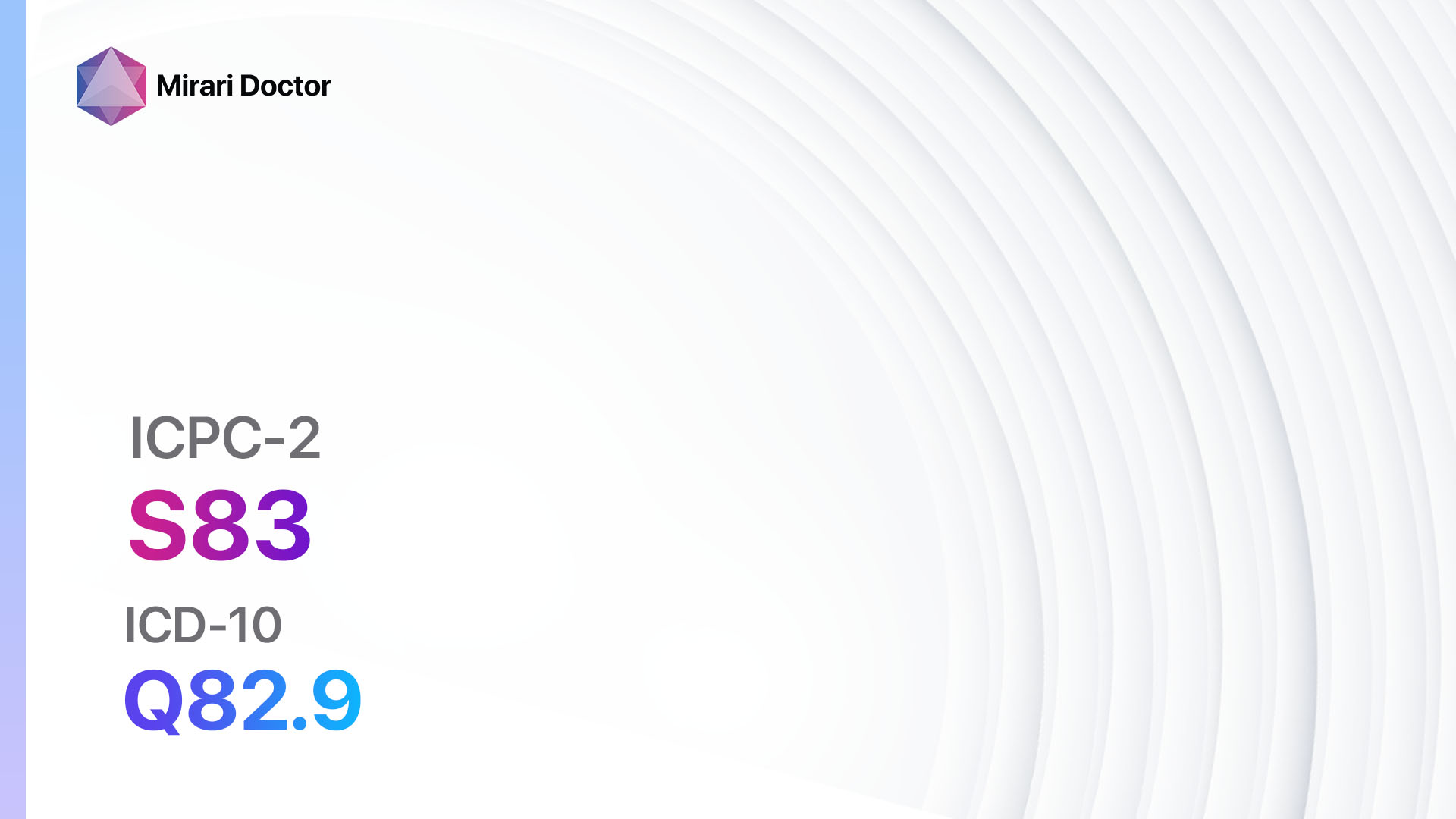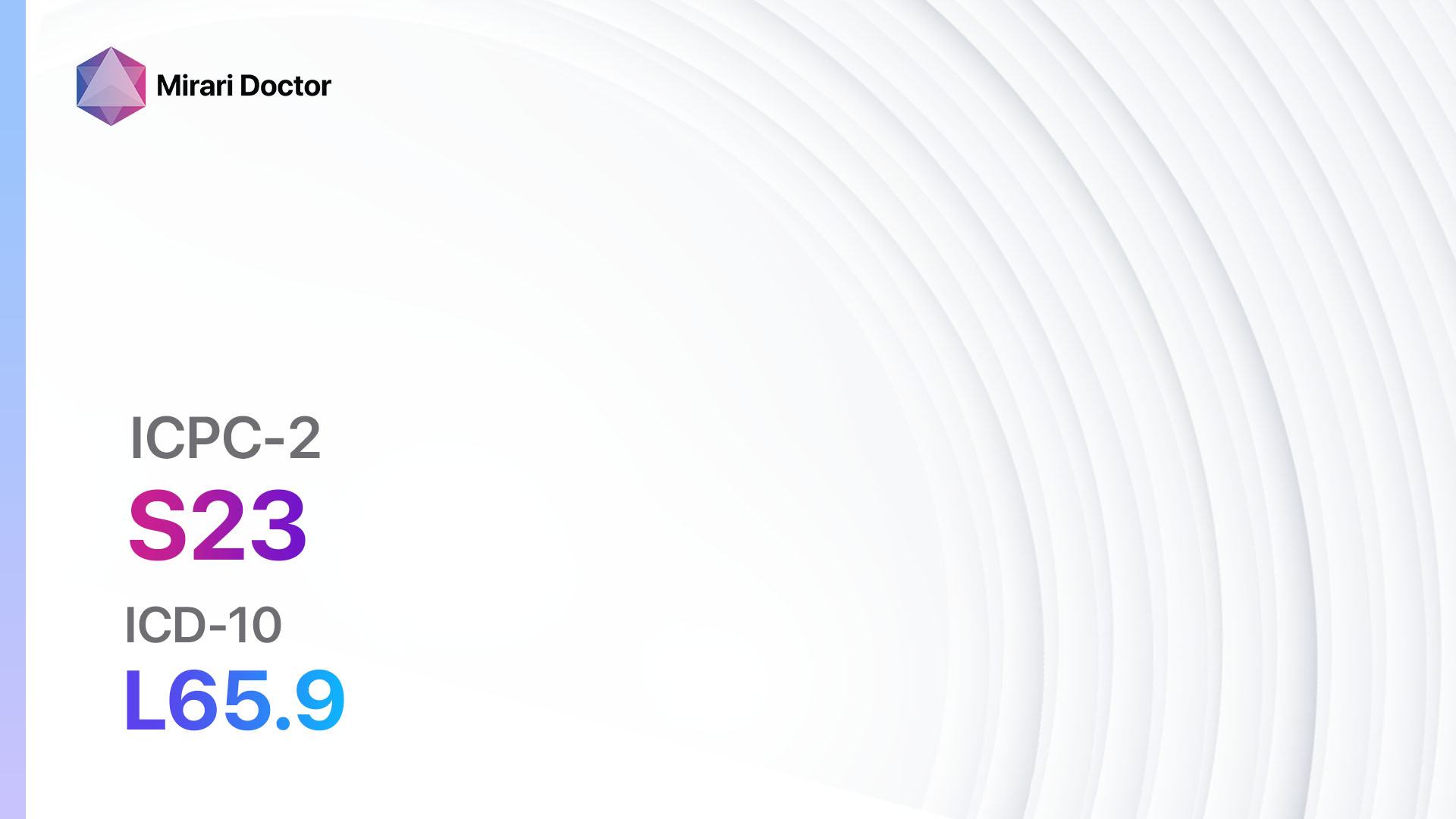
Introduction
Dermatitis/atopic eczema is a chronic inflammatory skin condition that affects both children and adults[1]. It is characterized by dry, itchy, and inflamed skin[2]. The aim of this guide is to provide healthcare professionals with a comprehensive overview of the diagnosis and management of dermatitis/atopic eczema.
Codes
Symptoms
- Dry skin: The skin may appear rough, scaly, or cracked[3].
- Itching: Itching is a common symptom and can be severe, leading to scratching and further skin damage[4].
- Redness: The affected skin may be red or inflamed[5].
- Swelling: In some cases, the skin may become swollen or puffy[6].
- Blisters: Fluid-filled blisters may develop, especially in severe cases[7].
- Crusting: The skin may develop crusts or scabs due to scratching[8].
Causes
- Genetic factors: Dermatitis/atopic eczema tends to run in families, suggesting a genetic predisposition[9].
- Environmental factors: Exposure to certain allergens or irritants, such as pollen, pet dander, dust mites, or harsh chemicals, can trigger or worsen symptoms[10].
- Immune system dysfunction: People with dermatitis/atopic eczema have an overactive immune system, leading to inflammation and skin damage.
Diagnostic Steps
Medical History
- Gather information about the patient’s personal and family history of dermatitis/atopic eczema.
- Ask about any known triggers or exacerbating factors.
- Inquire about the duration and severity of symptoms.
- Assess the impact of symptoms on the patient’s quality of life.
Physical Examination
- Inspect the skin for characteristic signs of dermatitis/atopic eczema, such as dryness, redness, swelling, and crusting.
- Note the distribution and extent of the affected areas.
- Look for signs of secondary infection, such as oozing, pus, or crusts.
- Evaluate the patient’s nails and scalp for signs of involvement.
Determine Severity
- Mild: Symptoms are present but do not significantly impact the patient’s quality of life. The skin is mildly dry and itchy, with minimal redness and no significant swelling or crusting.
- Moderate: Symptoms are more pronounced and may interfere with daily activities. The skin is moderately dry and itchy, with moderate redness, swelling, and crusting.
- Severe: Symptoms are severe and significantly affect the patient’s quality of life. The skin is very dry and itchy, with intense redness, swelling, and crusting. Blisters may be present, and the risk of secondary infection is high.
Laboratory Tests
- There are no specific laboratory tests for the diagnosis of dermatitis/atopic eczema.
- Blood tests may be ordered to rule out other conditions or assess for allergies, such as a complete blood count (CBC) and allergy testing.
Diagnostic Imaging
- Diagnostic imaging is not typically necessary for the diagnosis of dermatitis/atopic eczema.
Other Tests
- Patch testing: Patch testing may be performed to identify specific allergens that may be triggering or exacerbating symptoms.
- Skin biopsy: In rare cases, a skin biopsy may be performed to rule out other skin conditions or to confirm the diagnosis.
Follow-up and Patient Education
- Schedule regular follow-up appointments to monitor the patient’s progress and adjust treatment as needed.
- Provide education on proper skincare, including the use of gentle cleansers, moisturizers, and avoiding triggers or irritants.
- Educate the patient on the importance of avoiding scratching and managing itchiness through non-pharmacological methods.
Possible Interventions
Traditional Interventions
Medications:
Top 5 drugs for Dermatitis/atopic eczema:
- Topical corticosteroids (e.g., Hydrocortisone, Betamethasone):
- Cost: Generic versions can range from $5-$50 per tube.
- Contraindications: Active bacterial, viral, or fungal skin infections.
- Side effects: Thinning of the skin, skin discoloration, and stretch marks.
- Severe side effects: Rare, but may include adrenal suppression or allergic reactions.
- Drug interactions: None significant.
- Warning: Long-term use should be avoided, especially on sensitive areas of the skin.
- Topical calcineurin inhibitors (e.g., Tacrolimus, Pimecrolimus):
- Cost: Generic versions can range from $50-$200 per tube.
- Contraindications: Active bacterial, viral, or fungal skin infections.
- Side effects: Burning or stinging sensation at the application site.
- Severe side effects: Rare, but may include skin infections or skin cancer.
- Drug interactions: None significant.
- Warning: Long-term use should be avoided, especially on sensitive areas of the skin.
- Topical phosphodiesterase-4 (PDE4) inhibitors (e.g., Crisaborole):
- Cost: Approximately $600 for a 60g tube.
- Contraindications: None known.
- Side effects: Burning or stinging sensation at the application site.
- Severe side effects: None known.
- Drug interactions: None significant.
- Warning: None.
- Oral antihistamines (e.g., Cetirizine, Loratadine):
- Cost: Generic versions can range from $5-$20 per month.
- Contraindications: None significant.
- Side effects: Drowsiness, dry mouth.
- Severe side effects: Rare, but may include allergic reactions or liver damage.
- Drug interactions: None significant.
- Warning: Avoid driving or operating heavy machinery if drowsiness occurs.
- Systemic corticosteroids (e.g., Prednisone):
- Cost: Generic versions can range from $10-$50 per month.
- Contraindications: Active infections, uncontrolled diabetes, or systemic fungal infections.
- Side effects: Increased appetite, weight gain, mood changes.
- Severe side effects: Long-term use can lead to adrenal suppression, osteoporosis, or increased risk of infections.
- Drug interactions: None significant.
- Warning: Short-term use only, due to potential severe side effects.
Alternative Drugs:
- Topical immunomodulators (e.g., Crisaborole, Tacrolimus): Alternative options for patients who cannot tolerate or do not respond to corticosteroids.
- Oral immunosuppressants (e.g., Methotrexate, Cyclosporine): Reserved for severe cases that do not respond to other treatments. Requires close monitoring and may have significant side effects.
- Biologic agents (e.g., Dupilumab): Used for moderate to severe cases that do not respond to other treatments. Requires specialized administration and monitoring.
Surgical Procedures:
- There are no surgical procedures indicated for the treatment of dermatitis/atopic eczema.
Alternative Interventions
- Wet wrap therapy: Involves applying wet bandages or clothing over moisturizers or medications to enhance absorption and provide relief. Cost: Minimal, as it can be done at home.
- Bleach baths: Diluted bleach baths can help reduce bacterial colonization and improve symptoms. Cost: Minimal, as it can be done at home.
- Probiotics: Some evidence suggests that certain strains of probiotics may help reduce symptoms. Cost: Varies depending on the specific product.
- Relaxation techniques: Stress reduction techniques, such as meditation or yoga, may help manage symptoms. Cost: Varies depending on the specific method chosen.
Lifestyle Interventions
- Moisturize regularly: Use fragrance-free moisturizers to keep the skin hydrated and prevent dryness. Cost: $5-$20 per bottle.
- Avoid triggers: Identify and avoid triggers that worsen symptoms, such as certain fabrics, soaps, or allergens. Cost: Varies depending on the specific trigger.
- Wear appropriate clothing: Choose loose-fitting, breathable clothing made from natural fibers to minimize irritation. Cost: Varies depending on the specific clothing item.
- Manage stress: Engage in stress-reducing activities, such as exercise, meditation, or hobbies. Cost: Varies depending on the specific activity.
- Maintain a healthy diet: Eat a balanced diet rich in fruits, vegetables, and omega-3 fatty acids to support skin health. Cost: Varies depending on individual food choices.
It is important to note that the cost ranges provided are approximate and may vary depending on the location and availability of the interventions.
Mirari Cold Plasma Alternative Intervention
Understanding Mirari Cold Plasma
- Safe and Non-Invasive Treatment: Mirari Cold Plasma is a safe and non-invasive treatment option for various skin conditions. It does not require incisions, minimizing the risk of scarring, bleeding, or tissue damage.
- Efficient Extraction of Foreign Bodies: Mirari Cold Plasma facilitates the removal of foreign bodies from the skin by degrading and dissociating organic matter, allowing easier access and extraction.
- Pain Reduction and Comfort: Mirari Cold Plasma has a local analgesic effect, providing pain relief during the treatment, making it more comfortable for the patient.
- Reduced Risk of Infection: Mirari Cold Plasma has antimicrobial properties, effectively killing bacteria and reducing the risk of infection.
- Accelerated Healing and Minimal Scarring: Mirari Cold Plasma stimulates wound healing and tissue regeneration, reducing healing time and minimizing the formation of scars.
Mirari Cold Plasma Prescription
Video instructions for using Mirari Cold Plasma Device – S87 Dermatitis/atopic eczema (ICD-10:L20.9)
| Mild | Moderate | Severe |
| Mode setting: 1 (Infection) Location: 0 (Localized) Morning: 15 minutes, Evening: 15 minutes |
Mode setting: 1 (Infection) Location: 0 (Localized) Morning: 30 minutes, Lunch: 30 minutes, Evening: 30 minutes |
Mode setting: 1 (Infection) Location: 0 (Localized) Morning: 30 minutes, Lunch: 30 minutes, Evening: 30 minutes |
| Mode setting: 2 (Wound Healing) Location: 0 (Localized) Morning: 15 minutes, Evening: 15 minutes |
Mode setting: 2 (Wound Healing) Location: 0 (Localized) Morning: 30 minutes, Lunch: 30 minutes, Evening: 30 minutes |
Mode setting: 2 (Wound Healing) Location: 0 (Localized) Morning: 30 minutes, Lunch: 30 minutes, Evening: 30 minutes |
| Mode setting: 3 (Antiviral Therapy) Location: 0 (Localized) Morning: 15 minutes, Evening: 15 minutes |
Mode setting: 3 (Antiviral Therapy) Location: 0 (Localized) Morning: 30 minutes, Lunch: 30 minutes, Evening: 30 minutes |
Mode setting: 3 (Antiviral Therapy) Location: 0 (Localized) Morning: 30 minutes, Lunch: 30 minutes, Evening: 30 minutes |
| Mode setting: 10 (Dermatitis/Fungus) Location: 0 (Localized) Morning: 15 minutes, Evening: 15 minutes |
Mode setting: 10 (Dermatitis/Fungus) Location: 0 (Localized) Morning: 30 minutes, Lunch: 30 minutes, Evening: 30 minutes |
Mode setting: 10 (Dermatitis/Fungus) Location: 0 (Localized) Morning: 30 minutes, Lunch: 30 minutes, Evening: 30 minutes |
| Total Morning: 60 minutes approx. $10 USD, Evening: 60 minutes approx. $10 USD |
Total Morning: 120 minutes approx. $20 USD, Lunch: 120 minutes approx. $20 USD, Evening: 120 minutes approx. $20 USD, |
Total Morning: 120 minutes approx. $20 USD, Lunch: 120 minutes approx. $20 USD, Evening: 120 minutes approx. $20 USD, |
| Usual treatment for 7-60 days approx. $140 USD – $1200 USD | Usual treatment for 6-8 weeks approx. $2,520 USD – $3,360 USD |
Usual treatment for 3-6 months approx. $5,400 USD – $10,800 USD
|
 |
|
Use the Mirari Cold Plasma device to treat Dermatitis/atopic eczema effectively.
WARNING: MIRARI COLD PLASMA IS DESIGNED FOR THE HUMAN BODY WITHOUT ANY ARTIFICIAL OR THIRD PARTY PRODUCTS. USE OF OTHER PRODUCTS IN COMBINATION WITH MIRARI COLD PLASMA MAY CAUSE UNPREDICTABLE EFFECTS, HARM OR INJURY. PLEASE CONSULT A MEDICAL PROFESSIONAL BEFORE COMBINING ANY OTHER PRODUCTS WITH USE OF MIRARI.
Step 1: Cleanse the Skin
- Start by cleaning the affected area of the skin with a gentle cleanser or mild soap and water. Gently pat the area dry with a clean towel.
Step 2: Prepare the Mirari Cold Plasma device
- Ensure that the Mirari Cold Plasma device is fully charged or has fresh batteries as per the manufacturer’s instructions. Make sure the device is clean and in good working condition.
- Switch on the Mirari device using the power button or by following the specific instructions provided with the device.
- Some Mirari devices may have adjustable settings for intensity or treatment duration. Follow the manufacturer’s instructions to select the appropriate settings based on your needs and the recommended guidelines.
Step 3: Apply the Device
- Place the Mirari device in direct contact with the affected area of the skin. Gently glide or hold the device over the skin surface, ensuring even coverage of the area experiencing.
- Slowly move the Mirari device in a circular motion or follow a specific pattern as indicated in the user manual. This helps ensure thorough treatment coverage.
Step 4: Monitor and Assess:
- Keep track of your progress and evaluate the effectiveness of the Mirari device in managing your Dermatitis/atopic eczema. If you have any concerns or notice any adverse reactions, consult with your health care professional.
Note
This guide is for informational purposes only and should not replace the advice of a medical professional. Always consult with your healthcare provider or a qualified medical professional for personal advice, diagnosis, or treatment. Do not solely rely on the information presented here for decisions about your health. Use of this information is at your own risk. The authors of this guide, nor any associated entities or platforms, are not responsible for any potential adverse effects or outcomes based on the content.
Mirari Cold Plasma System Disclaimer
- Purpose: The Mirari Cold Plasma System is a Class 2 medical device designed for use by trained healthcare professionals. It is registered for use in Thailand and Vietnam. It is not intended for use outside of these locations.
- Informational Use: The content and information provided with the device are for educational and informational purposes only. They are not a substitute for professional medical advice or care.
- Variable Outcomes: While the device is approved for specific uses, individual outcomes can differ. We do not assert or guarantee specific medical outcomes.
- Consultation: Prior to utilizing the device or making decisions based on its content, it is essential to consult with a Certified Mirari Tele-Therapist and your medical healthcare provider regarding specific protocols.
- Liability: By using this device, users are acknowledging and accepting all potential risks. Neither the manufacturer nor the distributor will be held accountable for any adverse reactions, injuries, or damages stemming from its use.
- Geographical Availability: This device has received approval for designated purposes by the Thai and Vietnam FDA. As of now, outside of Thailand and Vietnam, the Mirari Cold Plasma System is not available for purchase or use.
References
- Weidinger, S., Beck, L. A., Bieber, T., Kabashima, K., & Irvine, A. D. (2018). Atopic dermatitis. Nature Reviews Disease Primers, 4(1), 1-20.
- Eichenfield, L. F., Tom, W. L., Chamlin, S. L., Feldman, S. R., Hanifin, J. M., Simpson, E. L., … & Sidbury, R. (2014). Guidelines of care for the management of atopic dermatitis: section 1. Diagnosis and assessment of atopic dermatitis. Journal of the American Academy of Dermatology, 70(2), 338-351.
- Bieber, T. (2008). Atopic dermatitis. New England Journal of Medicine, 358(14), 1483-1494.
- Yosipovitch, G., & Papoiu, A. D. (2008). What causes itch in atopic dermatitis?. Current allergy and asthma reports, 8(4), 306-311.
- Leung, D. Y., & Bieber, T. (2003). Atopic dermatitis. The Lancet, 361(9352), 151-160.
- Akdis, C. A., Akdis, M., Bieber, T., Bindslev‐Jensen, C., Boguniewicz, M., Eigenmann, P., … & Luger, T. A. (2006). Diagnosis and treatment of atopic dermatitis in children and adults: European Academy of Allergology and Clinical Immunology/American Academy of Allergy, Asthma and Immunology/PRACTALL Consensus Report. Allergy, 61(8), 969-987.
- Wollenberg, A., Oranje, A., Deleuran, M., Simon, D., Szalai, Z., Kunz, B., … & Vestergaard, C. (2016). ETFAD/EADV Eczema task force 2015 position paper on diagnosis and treatment of atopic dermatitis in adult and paediatric patients. Journal of the European Academy of Dermatology and Venereology, 30(5), 729-747.
- Hanifin, J. M., Cooper, K. D., Ho, V. C., Kang, S., Krafchik, B. R., Margolis, D. J., … & Van Voorhees, A. S. (2004). Guidelines of care for atopic dermatitis. Journal of the American Academy of Dermatology, 50(3), 391-404.
- Irvine, A. D., McLean, W. I., & Leung, D. Y. (2011). Filaggrin mutations associated with skin and allergic diseases. New England Journal of Medicine, 365(14), 1315-1327.
- Werfel, T., Allam, J. P., Biedermann, T., Eyerich, K., Gilles, S., Guttman‐Yassky, E., … & Novak, N. (2016). Cellular and molecular immunologic mechanisms in patients with atopic dermatitis. Journal of Allergy and Clinical Immunology, 138(2), 336-349.
Related articles
Made in USA




























